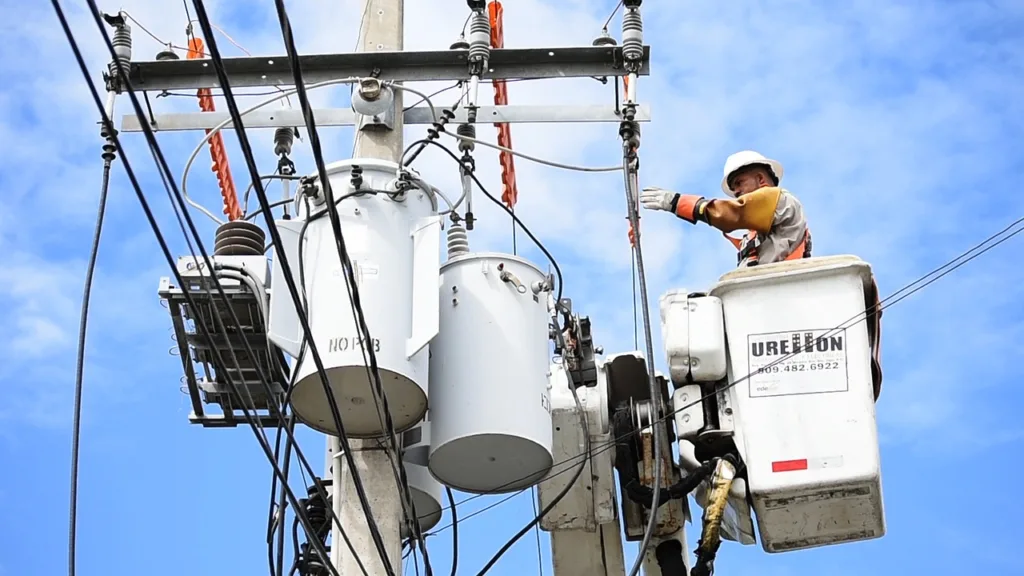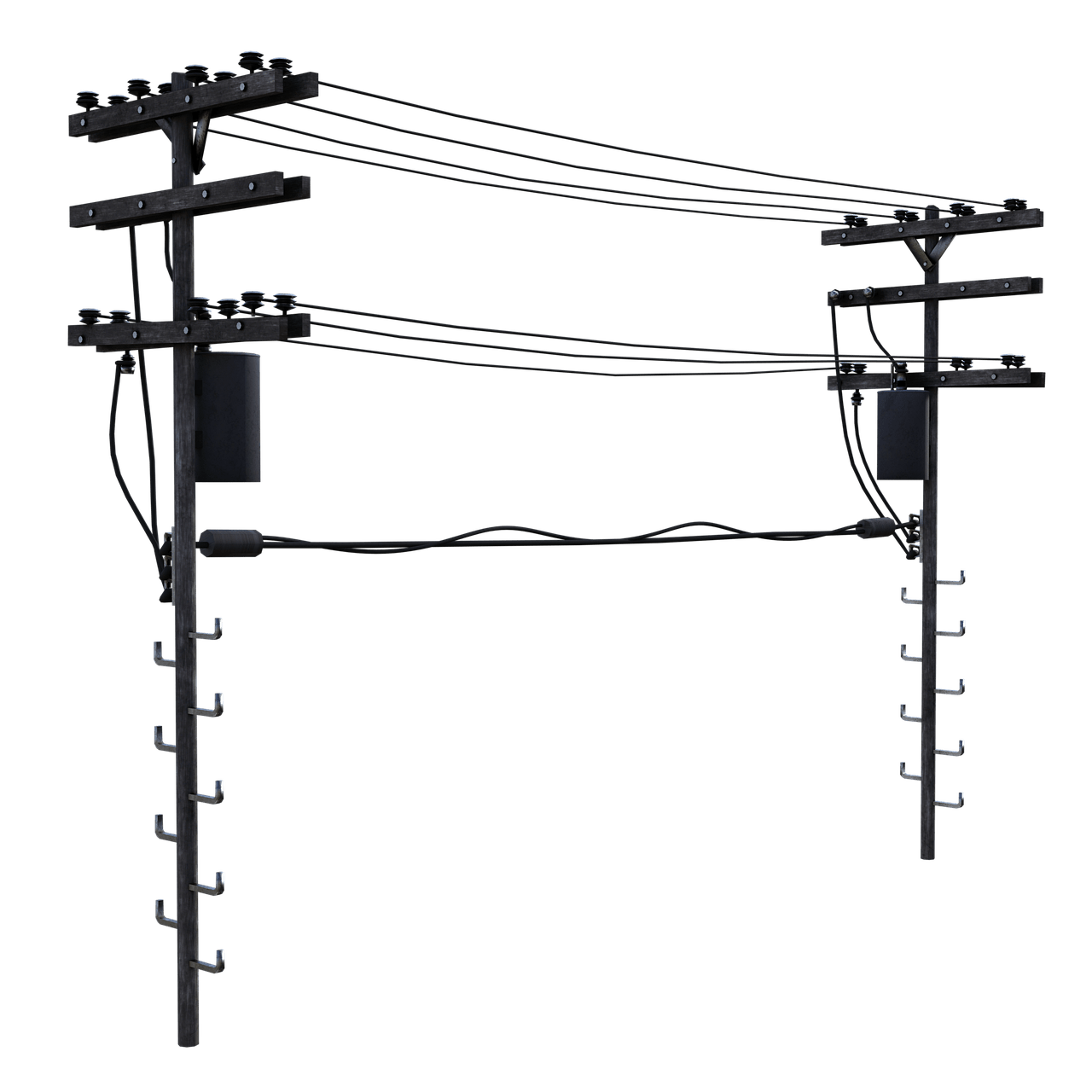Voltage, an essential element in electrical systems, plays a critical role in the efficient and reliable transmission of power across vast distances. Have you ever wondered why voltage in transmission lines is often a multiple of 11? In this beginner’s guide, we’ll explore the reasons behind this pattern and put light on the principles that govern the voltage selection in transmission lines. kV (kilovolts)
Table of Contents
Introduction to Voltage in Transmission Lines
Voltage, often measured in kilovolts (kV) for power transmission, is the driving force that pushes electric current through conductors. In the case of transmission lines, voltages are selected carefully to balance efficiency, safety, and practicality. Transmission lines carry electricity over long distances, and the choice of voltage level directly impacts the overall performance of the electrical grid.
One of the primary technical reasons for choosing specific voltage levels in transmission lines is efficiency. Higher voltages can transmit more power over long distances with fewer losses. Engineers carefully select voltage levels to optimize the balance between power transmission efficiency and safety.
Historical Context: The Emergence of 11 kV
The choice of multiples of 11 kV in voltage standards can be traced back to historical developments in the electrical industry. In the early days of electricity transmission, engineers faced challenges in achieving efficient energy transfer over long distances. Through experimentation and analysis, it was discovered that using voltages in multiples of 11 kV produced favorable outcomes in terms of reduced losses and improved stability.
In many cases, the early power generation and distribution systems were limited in their technology and infrastructure. Voltages in multiples of 11 kV provided a balance between achieving efficient transmission and avoiding excessive voltage levels that could lead to insulator breakdowns and other technical challenges.
Harmonics and System Compatibility
Harmonics, which are multiples of the fundamental frequency, can arise in electrical systems. When harmonics are present, they can cause undesirable effects such as overheating of equipment and interference with other communication systems. Using voltages in multiples of 11 kV helps to reduce the risk of harmonic resonance, ensuring that the transmission system remains stable and reliable.
Efficiency in Transmission and Distribution
One of the primary advantages of using voltages in multiples of 11 kV is the improvement in transmission and distribution efficiency. According to Joule’s law, power loss in a conductor is proportional to the square of the current and the resistance. Higher voltages lead to lower current requirements for a given amount of power, as per the formula P = IV (power equals current multiplied by voltage). Reduced current translates to lower resistive losses in transmission lines, enhancing overall efficiency.

Voltage Regulation and Loss Minimization
Voltage drop is a concern in transmission and distribution networks. As electricity travels through transmission lines, there is a natural decrease in voltage due to the resistance of the conductors. By using multiples of 11 kV, voltage drop can be managed more effectively, minimizing the need for costly infrastructure upgrades. This ensures that the electricity delivered to end-users remains within acceptable voltage limits.
Balancing between Practicality and Performance
The choice of voltage standards involves a delicate balance between practical implementation and system performance. Multiples of 11 kV strike this balance by offering manageable voltage levels while optimizing transmission efficiency. This balance is crucial to ensure that power transmission remains reliable, cost-effective, and safe.
Challenges and Considerations
While the use of multiples of 11 kV is advantageous, it’s important to note that modern power systems have evolved significantly. New technologies, such as renewable energy sources and advanced monitoring systems, have introduced complexities that require a reevaluation of voltage standards. Additionally, the global push for sustainability and reduced carbon emissions has prompted changes in the energy landscape. As a result, engineers and experts are continuously assessing the appropriateness of existing voltage standards and considering adjustments to accommodate evolving requirements.
Future Prospects of Voltage Standards
As the energy landscape continues to evolve, voltage standards may see adjustments to meet the demands of emerging technologies and sustainability goals. The focus will likely remain on optimizing efficiency, minimizing losses, and ensuring system stability. The integration of renewable energy sources, smart grids, and electric vehicles into the power grid introduces new challenges that voltage standards must address to support a seamless and resilient energy future.
Conclusion
The curious connection between voltage in transmission lines and the number 11 is a testament to the intricate science behind electrical engineering. Multiples of 11 kV have proven to be a practical and efficient choice, driven by historical insights and technical advantages. While the future may bring changes, the foundation laid by this voltage standard remains an integral part of the power transmission story.
FAQs about Why Voltage in Transmission Lines is Often a Multiple of 11
- Does this mean all transmission voltages are multiples of 11 kV?
- While the use of multiples of 11 kV is common, not all transmission voltages follow this pattern. Various factors, including system design, regional standards, and technological advancements, can influence voltage choices.
- Are there any drawbacks to using multiples of 11 kV?
- While the advantages are significant, the evolving energy landscape presents challenges that may prompt a reevaluation of voltage standards to accommodate new technologies and requirements. Engineers must carefully consider factors such as harmonics, system compatibility, and voltage stability.
- Can using multiples of 11 kV help with renewable energy integration?
- Yes, by maintaining stable systems and efficient energy transfer, multiples of 11 kV can contribute to the seamless integration of renewable energy sources into the grid. However, this is just one aspect of the complex challenges posed by renewable energy integration.
- What is the significance of harmonics in transmission systems?
- Harmonics can cause interference, voltage distortion, and even equipment damage in electrical systems. Using voltage levels in multiples of 11 kV helps mitigate these issues, but managing harmonics requires a comprehensive approach that involves proper system design and filtering.
- Where can I learn more about voltage standards and electrical systems?
- For more in-depth information and resources related to voltage standards, electrical engineering, and power systems, you can CLICK HERE

